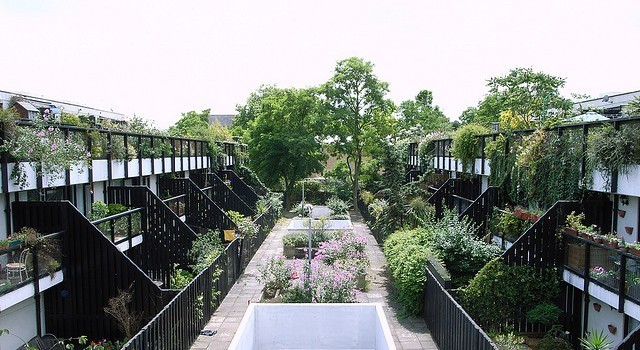– Growing vegetables and herbs on the roof of a private or commercial building offers many advantages, including reducing stormwater run-off and helping to cool the building.
– A report prepared by a UTS academic for City of Sydney council sets out best-practice guidelines for food production on rooftops.
What if the greens you need for tonight's dinner were grown on the roof of the office where you work? From a cook's perspective this is a dream – fresh produce and no time wasted on shopping. And the advantages of urban farming extend way beyond the wellbeing of the time-poor consumer. Produce farmed on urban rooftops also contributes to reducing the heat island effect of cities, lowering summer temperatures and minimising the carbon footprint of food.
Rooftop vegetable gardens increase urban biodiversity; decrease stormwater run-off; offer psychological benefits to those involved with the garden and with fellow gardeners; and can even protect and extend the lifetime of the roof.
Interest in green roofs is growing like dandelions in spring: the City of Sydney reports an average of one development application a week for a green roof or wall. Already, 100,000 square metres is given over to green roofs across the city, and Lord Mayor Clover Moore says the City is doing all it can “to introduce more of these features into our urban landscape”.
The final report was delivered to council late last year. User-friendly guides developed from Dr Wilkinson's findings are being drafted for the council website.
Dr Wilkinson stresses that the goal of urban farming is not self-sufficiency but to contribute to food production and derive the other benefits of green roofs.
“On food security, food miles, social and psychological concerns, environmental action, it ticks so many boxes to grow food locally,” she says.
The first step in her study was to identify appropriate sites for the test gardens. “Factors like access, water and power have to be considered,” she says, “and then there is the attitude of building managers.”
Her expertise is in building adaptation rather than horticulture so she has the background to understand building management concerns. To alleviate these she is developing a template for a rooftop farming licence agreement that will set out the terms, roles and responsibilities of all parties involved in rooftop food production.
The UTS study compared three types of gardens on the roof of three campus buildings. Vegetables and herbs were grown in a raised bed, a vertical garden and a wicking bed.
The beds were planted with eggplant, zucchini, basil, carrots, beetroot, lettuce, chilli, capsicum, silver beet, celery, rocket, mizuna and marigolds. Soil toxicologists studied the produce before it was harvested for consumption, to allay concerns about pollution from the busy Broadway traffic several floors down or from other sources such as water or soil.
The next stage of Dr Wilkinson's research is to apply the findings in the corporate and commercial sector. She is in discussions to introduce food production to the rooftops of commercial buildings in Sydney's central business district. Though it's not here yet, the future may offer salad and sides from the rooftop of your workplace or apartment block.
The green roof would cost $464,000 to install versus $335,000 for a conventional roof in 2006 dollars. However, over its lifetime, the green roof would save about $200,000. Nearly two-thirds of these savings would come from reduced energy needs for the building with the green roof.
Please Read this Article at NaturalBlaze.com
Photo Source: Steve Cadman





Leave a Reply